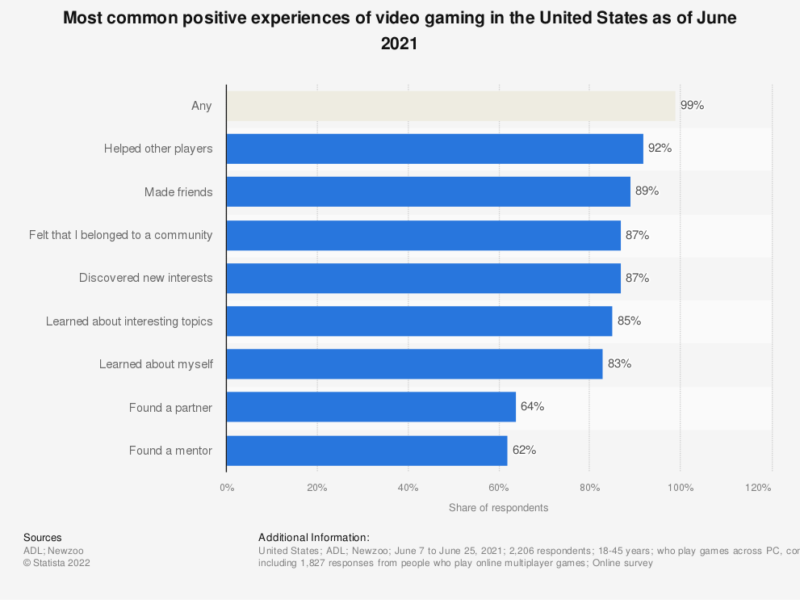The Early Days of Online Gaming
Text-based Games: The Beginning of Online Gaming
Text-based games marked the inception of online gaming, paving the way for the vast and immersive virtual worlds we know today. These early games, often played through simple command prompts, captivated players with their imaginative narratives and interactive gameplay. With limited graphics and no visual representation, players relied solely on their imagination and descriptive text to navigate through these virtual realms. Despite their simplicity, text-based games fostered a sense of community among players, as they shared their experiences and strategies through online forums and chat rooms. These games laid the foundation for the evolution of online gaming, igniting a passion for virtual adventures that continues to thrive in the modern era.
Multi-User Dungeons (MUDs): The Emergence of Online Role-Playing
Multi-User Dungeons (MUDs) marked a significant milestone in the evolution of online games, particularly in the realm of role-playing. These text-based virtual worlds emerged in the late 1970s and early 1980s, captivating players with their immersive and interactive gameplay. MUDs allowed multiple users to simultaneously explore vast virtual landscapes, interact with each other, and engage in collaborative storytelling. Players could assume various roles, such as warriors, wizards, or thieves, and embark on quests, solve puzzles, and battle monsters together. The emergence of MUDs not only laid the foundation for the online role-playing genre but also fostered the development of online communities, where players could socialize, form guilds, and forge lasting friendships. With their innovative gameplay mechanics and the ability to connect players from around the world, MUDs set the stage for the future of online gaming and paved the way for the virtual reality experiences we enjoy today.
Graphical MUDs: Adding Visual Elements to Online Gaming
Graphical MUDs, also known as Multi-User Dungeons, marked a significant milestone in the evolution of online gaming by introducing visual elements to the previously text-based experience. These games utilized graphics to enhance the immersive nature of the virtual worlds, allowing players to navigate through visually rich environments and interact with objects and characters in a more intuitive way. The introduction of graphical MUDs not only appealed to a wider audience but also revolutionized the online gaming industry, paving the way for more advanced graphical technologies and eventually leading to the development of virtual reality gaming experiences.
The Rise of Massively Multiplayer Online Games (MMOs)
The Success of Ultima Online: Pioneering the MMO Genre
The success of Ultima Online marked a significant milestone in the evolution of online games, as it pioneered the massively multiplayer online (MMO) genre. Released in 1997, Ultima Online introduced players to a vast virtual world where they could interact with thousands of other players in real-time. Its immersive gameplay, open-ended nature, and player-driven economy set a new standard for online gaming experiences. Ultima Online’s success not only paved the way for future MMOs but also demonstrated the immense potential of virtual worlds as a platform for social interaction, exploration, and cooperative gameplay. Its impact on the gaming industry cannot be overstated, as it laid the foundation for the thriving MMO genre we see today.
EverQuest: Popularizing the MMO Experience
EverQuest: Popularizing the MMO Experience
One game that played a significant role in popularizing the massively multiplayer online (MMO) experience was EverQuest. Released in 1999 by Sony Online Entertainment, EverQuest revolutionized the gaming industry by offering players a vast and immersive virtual world to explore. With its rich lore, challenging quests, and social interaction, EverQuest quickly gained a dedicated fan base and became a benchmark for future MMOs. The game’s success can be attributed to its innovative gameplay mechanics, which allowed thousands of players to interact and cooperate in real-time, forging friendships and alliances within the virtual realm. EverQuest’s influence on the MMO genre cannot be overstated, as it paved the way for subsequent titles like World of Warcraft and Guild Wars, shaping the future of online gaming.
World of Warcraft: Redefining the MMO Landscape
World of Warcraft, developed by Blizzard Entertainment, is a groundbreaking game that has revolutionized the massively multiplayer online (MMO) genre. Released in 2004, it quickly became a cultural phenomenon, attracting millions of players from around the world. With its immersive gameplay, rich lore, and vast virtual world, World of Warcraft redefined what it meant to be an MMO. The game introduced a level of depth and complexity previously unseen, offering players a truly immersive experience. Its success paved the way for future MMOs, inspiring developers to push the boundaries of what was possible in online gaming. World of Warcraft’s impact on the MMO landscape cannot be overstated, as it set a new standard for the genre and continues to be a dominant force in the gaming industry.
The Advent of Browser-Based Games
Flash Games: Casual Gaming for the Masses
Flash games emerged as a revolutionary form of casual gaming, captivating the masses with their accessibility and simplicity. These games, often played directly in web browsers, provided a quick and enjoyable gaming experience for players of all ages. With their low system requirements and easy-to-learn mechanics, flash games became a popular choice for those seeking entertainment during short breaks or leisurely moments. From addictive puzzle games to thrilling action adventures, flash games offered a wide variety of genres to cater to different preferences. Their widespread availability and ease of access made them a staple in the online gaming industry, attracting millions of players worldwide. However, as technology advanced and new platforms emerged, flash games gradually faded into obscurity, paving the way for more immersive and visually stunning gaming experiences.
HTML5 Games: Advancements in Browser Technology
HTML5 Games: Advancements in Browser Technology
With the rapid advancement of browser technology, HTML5 games have emerged as a game-changer in the world of online gaming. Unlike their predecessors, HTML5 games do not require any additional plugins or downloads, making them easily accessible to a wider audience. This technology has revolutionized the gaming industry by allowing developers to create high-quality games that can be played directly in a web browser, eliminating the need for complex installations or compatibility issues. Furthermore, HTML5 games are not limited to a specific platform or device, as they can be played seamlessly on desktop computers, laptops, tablets, and even smartphones. This versatility has significantly expanded the reach of online gaming, enabling players to enjoy immersive and interactive experiences regardless of their preferred device. As browser technology continues to evolve, we can expect HTML5 games to become even more sophisticated, pushing the boundaries of what is possible in the online gaming landscape.
Social Media Games: The Integration of Gaming and Social Networking
Social Media Games: The Integration of Gaming and Social Networking
With the rise of social media platforms, online games have undergone a significant transformation by integrating gaming and social networking. These games have revolutionized the way people interact and connect with others, blurring the lines between virtual and real-life social experiences. Social media games allow players to not only compete against each other but also collaborate and communicate, fostering a sense of community and camaraderie. Through features such as leaderboards, achievements, and in-game chat systems, players can easily share their progress, strategies, and experiences with friends and other players across the globe. Moreover, the integration of social media platforms within these games enables players to effortlessly invite and challenge their friends, further enhancing the social aspect of gaming. As a result, social media games have become a popular form of entertainment, providing a unique and immersive gaming experience that combines the thrill of competition with the joy of social interaction.
The Impact of Mobile Gaming
Mobile App Stores: A New Platform for Gaming
Mobile app stores have revolutionized the gaming industry, providing a new platform for gamers to access a wide range of games conveniently on their smartphones and tablets. With the rise of app stores such as Google Play and the Apple App Store, gaming has become more accessible than ever before. These platforms offer a vast selection of games, from casual and puzzle games to immersive multiplayer experiences. The convenience of mobile gaming has attracted a diverse audience, including both casual gamers and hardcore enthusiasts. Furthermore, the app stores have also opened up opportunities for independent game developers to showcase their creations to a global audience, leveling the playing field and fostering innovation in the industry. As mobile devices continue to advance in terms of processing power and graphics capabilities, the future of gaming on app stores looks promising, with even more immersive and visually stunning experiences on the horizon.
Casual and Hyper-Casual Games: Accessibility and Popularity
Casual and hyper-casual games have revolutionized the gaming industry with their accessibility and widespread popularity. These games are designed to be easy to learn and quick to play, making them appealing to a wide range of players, including those who may not consider themselves traditional gamers. With simple mechanics and intuitive controls, casual games have become a go-to source of entertainment for people looking to pass the time or unwind. Moreover, the rise of mobile gaming has further contributed to the popularity of casual games, as they can be easily played on smartphones and tablets. The success of hyper-casual games, in particular, can be attributed to their addictive nature and short gameplay loops, which keep players engaged and coming back for more. As the gaming industry continues to evolve, casual and hyper-casual games are likely to remain a dominant force, attracting both new and seasoned players alike.
Augmented Reality (AR) and Location-Based Games: Blurring the Lines Between Virtual and Real
Augmented Reality (AR) and Location-Based Games have revolutionized the gaming industry by blurring the lines between the virtual and real world. Unlike traditional online games, AR games overlay digital elements onto the real-world environment, enhancing the player’s perception and interaction with their surroundings. By utilizing advanced technologies such as GPS and motion tracking, these games create immersive experiences that seamlessly integrate virtual objects and characters into the player’s physical environment. This groundbreaking approach has not only transformed the way we play games but has also opened up new possibilities for education, entertainment, and social interaction. Whether it’s hunting for virtual creatures in Pokémon Go or solving location-based puzzles in Ingress, AR and location-based games have brought a new level of excitement and interactivity to the gaming landscape. As technology continues to advance, we can expect even more innovative and immersive experiences that further blur the boundaries between the virtual and real world.
The Revolution of Virtual Reality (VR) Gaming
The Introduction of VR Headsets: Immersive Gaming Experience
The introduction of VR headsets has revolutionized the gaming industry, providing players with an unparalleled level of immersion and a truly transformative gaming experience. These cutting-edge devices transport players into virtual worlds, allowing them to interact with their surroundings and characters in ways never before possible. With the use of VR headsets, gamers can now physically move within the game, explore vast landscapes, and engage in realistic combat or sports simulations. The level of detail and realism offered by these headsets is truly remarkable, with high-resolution displays, precise motion tracking, and 3D audio that further enhances the sense of presence. As a result, players can now feel as if they are truly inside the game, blurring the lines between reality and the virtual world. The introduction of VR headsets has undoubtedly marked a significant milestone in the evolution of online games, opening up a new era of immersive gaming experiences.
VR Games and Simulations: Realistic and Interactive Environments
VR Games and Simulations: Realistic and Interactive Environments
With the advent of virtual reality (VR) technology, online games have reached new heights of immersion and interactivity. VR games and simulations offer players the opportunity to step into incredibly realistic and interactive environments, blurring the line between the virtual and real world. By donning a VR headset and using motion controllers, players can explore vast virtual landscapes, engage in thrilling adventures, and interact with objects and characters in ways that were previously unimaginable. The level of detail and realism in these virtual worlds is truly astounding, with visually stunning graphics, lifelike physics, and convincing audio effects. Whether it’s exploring ancient ruins, piloting a spaceship, or battling mythical creatures, VR games and simulations provide an unparalleled level of immersion and sensory experience, making players feel as if they are truly part of the virtual world. As VR technology continues to advance, we can expect even more realistic and interactive environments, further revolutionizing the way we experience online games.
Social VR: Multiplayer Interaction in Virtual Worlds
Social VR is a groundbreaking development in the world of online gaming, revolutionizing the way players interact with each other in virtual worlds. With the advent of virtual reality technology, gamers can now immerse themselves in highly realistic and visually stunning environments, enhancing the sense of presence and social interaction. Social VR allows players to connect with friends, family, and even strangers from all around the globe, creating a truly global gaming community. Through the use of avatars, players can communicate, collaborate, and compete with each other, fostering a sense of camaraderie and competition. This multiplayer interaction in virtual worlds not only enhances the gaming experience but also opens up new opportunities for socializing, networking, and forming lasting friendships. As technology continues to advance, the potential for social VR in online gaming is limitless, promising even more immersive and engaging experiences for players in the future.
The Future of Online Gaming
Cloud Gaming: Streaming Games Anytime, Anywhere
Cloud gaming has revolutionized the way we experience online games, allowing us to stream and play our favorite titles anytime, anywhere. With the advent of high-speed internet connections and powerful servers, players no longer need to rely on expensive gaming hardware or physical game copies. Instead, they can access a vast library of games through cloud gaming platforms, which deliver the game content directly to their devices via streaming. This technology has not only made gaming more accessible but has also eliminated the need for lengthy downloads or updates, as everything is processed and stored on remote servers. Whether on a smartphone, tablet, or computer, gamers can now enjoy seamless gameplay with minimal latency, bringing the joy of gaming to a whole new level of convenience and flexibility.
Artificial Intelligence (AI) in Gaming: Enhanced Gameplay and Realism
Artificial Intelligence (AI) has revolutionized the gaming industry, enhancing gameplay and realism to unprecedented levels. With the integration of AI technology, online games have become more immersive and dynamic, providing players with a truly lifelike experience. AI-powered characters and non-player characters (NPCs) now possess advanced decision-making capabilities, adapting their behavior and strategies based on the player’s actions. This not only challenges the player’s skills but also creates a more engaging and unpredictable gaming environment. Additionally, AI algorithms enable game developers to create realistic physics simulations, lifelike graphics, and natural language processing, further blurring the line between virtual and reality. The incorporation of AI in gaming has undoubtedly elevated the overall gaming experience, captivating players and pushing the boundaries of what is possible in the virtual world.
Virtual Reality Continues to Evolve: Full Dive VR and Beyond
Virtual Reality (VR) has come a long way since its inception, and it continues to evolve at a rapid pace. One of the most exciting advancements in VR technology is the concept of Full Dive VR, which aims to provide users with a completely immersive and sensory experience. In Full Dive VR, users can not only see and hear the virtual world but also feel, taste, and smell it, blurring the line between reality and the digital realm. While Full Dive VR is still in its early stages of development, researchers and developers are tirelessly working to overcome technical challenges and create a truly transformative experience. Beyond Full Dive VR, the future of virtual reality holds even more possibilities, with advancements in haptic feedback, brain-computer interfaces, and augmented reality merging seamlessly with virtual environments. As VR technology continues to push boundaries, it is becoming increasingly clear that the evolution of online games is far from over, and the potential for immersive and realistic gaming experiences is limitless.


